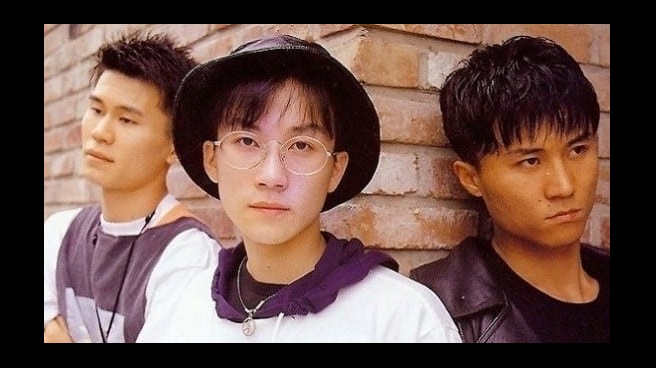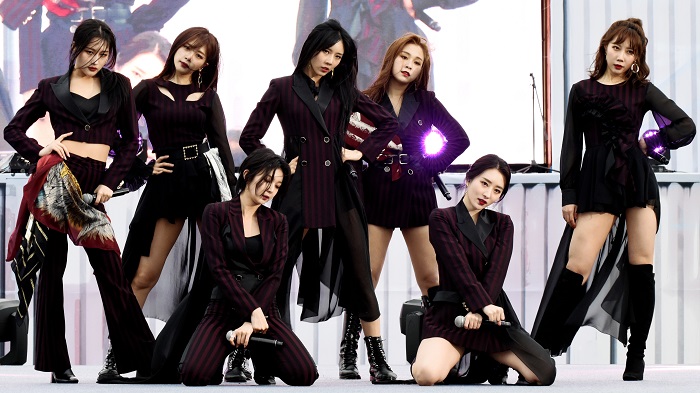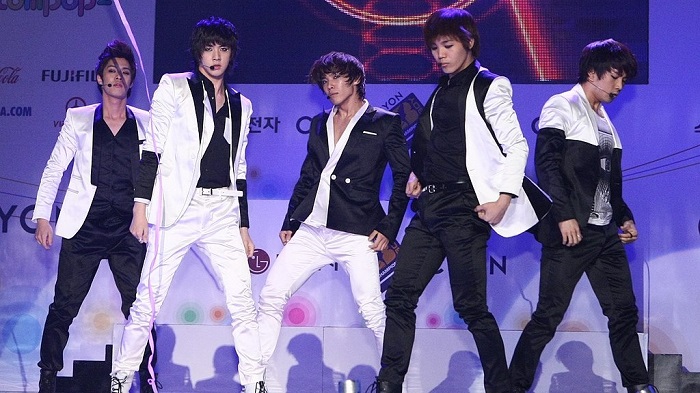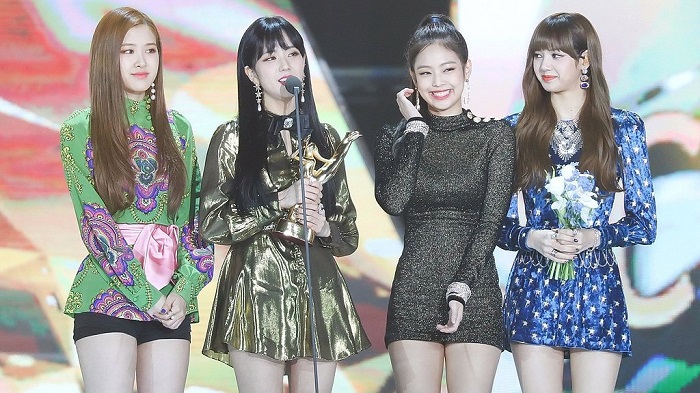A bunch of South Korean bands with a shy beginning in the 1990s soon made waves at the turn of the millennium with hit songs that amassed millions of views. Currently, bands like Blackpink (stylized as BLΛƆKPIИK), BTS, and many others are leading a tsunami of K-Pop success worldwide.
In 2018, K-Pop had a 20% increase in growth, while in 2020 this figure shot up to 45%. In 2019, it ranked 6th among the top ten global music markets, according to the International Federation of the Phonographic Industry.
So, what is K-Pop? And what is the big secret behind this dazzling popularity? Read on to know the whole story!
What Exactly is K-Pop Music?
K-Pop is the name that describes a cultural phenomenon, rather than a specific genre of music. Korean Pop is a Millennial type of song built around the Boy Band model. The actual tunes can be anything from Jazz, Gospel, Classical, Swing, Hip-Hop, all the way to Rap, Rock, or Metal.
Where Did the Name K-Pop Come from?
The very first time the name K-Pop came up in print was in no other than the Billboard Magazine. That was in 1999 when a Korean correspondent for the magazine used the acronym to describe that newcomer in the music scene.
At the time, South Korean Pop music was taking its very first steps. The potential and promise were sensed around the industry. And the insiders often nicknamed that category of songs K-Pop.
Cho Hyun-jin, the correspondent, hasn’t heard the word from these execs, but he doesn’t negate the possibility that the term K-Pop was already circulating back then.
The Origins and Timeline Of K-Pop

K-Pop is generally viewed as a recent phenomenon. However, some music enthusiasts believe that it has much deeper origins than the turn of the Millennium.
The Beginnings
The first time a Western song was played in South Korea was in 1885. Henry Appenzeller, who was an American missionary, taught the Korean children some Folk songs.
The lyrics soon became Korean, while the tunes remained intact. The Korean version of these Folk songs was called a “changga”.
Around 1870, the American Evangelists brought in Gospel music, and the Koreans seemed to acquire that taste pretty quickly. The fusion between Western and Korean music was natural and spontaneous. That’s probably why it endured and developed through the next years.
A Flash of Inspiration
In the 1950s, a Korean girl band started performing in Asia, and later on, in the United States. They called their trio the Kim Sisters, always looked as glam as it gets, and sang mostly in Korean.
Interestingly, there’s so much in common between the Kim sisters and the modern-day K-Pop bands. From the extra attention to appearance, the light bubbly songs, the mixed music genres, to the clear harmony between the band members.
The First Steps

The 1990s were the years when Hip-Hop was breaking ground, and the music scene welcomed it with open arms. The industry seemed to be constantly thirsty for good tunes. Very few performers could pull off the hard beats and even harder moves of Hip-Hop.
That was when Seo Taiji and Boys stormed the stage with their high energy, raw talent, and strict choreography. Their debut song I Know was constantly played on music TV, radio, and all over the clubs.
In the short time from 1992 till 1996, their 3 albums sold around 5 million copies, according to Billboard Magazine. That was a phenomenal figure back then. Shortly afterward, the band retired. But they’d already paved the way for the next wave of K-Pop bands.
K-Pop Takes Shape
Around the last years of the 1990s and the first years of the 2000s, the first deliberately-groomed K-Pop bands hit the music scene. Around the same time, Korean TV shows were attracting plenty of global attention, as well.
The Korean drama told different types of stories than the ones Hollywood or Bollywood served. And audiences worldwide were drawn to the new cultural experience. K-Pop was cleverly weaved into these TV shows, and the music was barely foreign to the millions of viewers.
By the time H.O.T, Sechs Kies, S.E.S., and Fin. K.L released their songs, the world felt that the tunes were familiar and close to their hearts. In 1997, H.O.T’s Candy had a legendary reception. K-Pop had already solidified its status as a music genre.
K-Pop Stardom

The 2010s and 2020s are probably the golden years for K-Pop bands. G.O.D, TVXQ, and BIGBANG did a lot of experimenting, and most of it was evidently successful.
The 2020s witnessed a record-breaking K-Pop release as Psy‘s incredible Gangnam Style music video went viral. It was the very first YouTube video that scored one billion views. It wasn’t a flash in a pan, and by December 2020, it had reached 3.9 billion views.
The subsequent wave of K-Pop bands needed to go bigger and higher, which they totally did. BTS, Seventeen, EXO, and BLΛƆKPIИK are currently basking in stardom, and there’s probably more to come!
The General Characteristics of K-Pop
K-Pop is a cultural wave rather than just a music genre. The characteristics of K-Pop thus include various features that we don’t often discuss when we talk about Jazz, Rock, Soul, or Hip-Hop.
Here are 8 aspects of K-Pop that differentiate it from any other music genre.
1. Production Line of Talent

Many people show immense surprise when they find out that K-Pop bands are created in schools, or incubators, that build these ‘projects’ from the ground up.
Candidates are selected from thousands of prospects, then they get extensive training that typically lasts for three years. These lucky picks stay at the school full time, where they learn music, vocalization, dancing, performing on a stage, and working with the media.
By the end of that cultivation period, groups of matching candidates are put together into themed bands. The up-and-coming K-Pop band starts appearing in various posters and trailers. Finally, they get a debut song that often blasts through all kinds of social media.
While this looks a lot like a recipe, the K-Pop bands are as varied and nuanced as they get. The hit songs that reached millions of viewers worldwide were really worthy of that success. Whether it’s a bubble gum song, a sarcastic jingle, or a deep song that teens play like an anthem, these K-Pop songs really add value.
South Korea treats art pretty much the same way that it treats a production line of Samsung or Ikea. Some say that this is a robotic and soulless manner of making art, while others believe that it’s that diligence that has put Korean art on the global map.
2. Thematic Selections

To stand out in the digital world, anything needs to turn into a brand. And K-Pop’s favorite branding method is giving bands a unique theme or flavor. This goes from the appearance of the members, the type of music they play, to the fantasy they inspire in their viewers.
This is also a part of the conceptualization and marketing recipe, but we have to admit that it works like a charm!
3. Fashion and Style
K-Pop bands are big on fashion and style. Most of the band members are trendsetters and social media influencers. Some bands are totally formal, while others might go a tad overboard with their outfits. In both cases, they’re viewed as fashion icons.
That’s largely due to their on- and off-screen meticulous attention to their appearance. It’s not easy to get the whole band to commit to a certain style or promote a specific brand, but they do have that kind of discipline.
As for K-Pop fans worldwide, they respond with admiration to the fads that their beloved idols spread from time to time.
4. Big K-Pop Bands
Backstreet Boys had 5 members, One Direction had 4, and there were only 3 of the Jonas Brothers.
Meanwhile, the typical K-Pop band has an average of seven members. BTS has exactly that number, Girl’s Generation has 8, and Exo has nine. As for NCT; there are 23 members in that group!

It’s said that the media companies sponsoring these bands prefer the larger size, as it provides more opportunity for engagement with the fans. With a band containing that many idols, the followers get to choose their favorite characters and styles from a wider selection.
The bigger bands are also better at performing elaborate dances on stage. The formations that 7 artists can do are definitely more sophisticated than a dance for three guys.
5. Mosaic of Music Genres
K-Pop is a fusion of almost all of the music genres, in addition to traditional Korean music. There are no rules governing the type of music you can hear in a K-Pop song. Some bands might lean a bit more towards Rock or Hip-Hop, while others could favor the slower Blues or Country.
This is still not a style that the band would adopt forever. They could surprise their audiences with a totally different mood in their next big hit. Even within the same album, you could easily find rough tunes that mimic the harshness of Metal, then a romantic ballad done in the softest tones!
It’s worth noting that this tendency for cocktail-making crosses over to the languages used in K-Pop. It’s customary to find English and Korean merging together in everything K-Pop. The titles, lyrics, band labels, and performers’ names are all a medley of English and Korean.
The music of K-Pop isn’t based solely on the vocal capabilities of the performers, the depth of their lyrics, or the uniqueness of their articulations. These songs are pretty much a collective of novel styles, catchy tunes, stunning audiovisuals, and extremely good marketing.
6. Choreographed K-Pop Dance Routines

Elaborately choreographed routines are an integral part of K-Pop. Performers typically spend years training and perfecting dancing. There are many schools that teach dancing and fitness for music hopefuls who aspire to join a band one day.
Needless to say, these schools are flourishing and gradually becoming quite a profitable business. The bigger studios that take on preparing the bands from concept to stag, often have their own in-house dance schools. Typically, the band candidates spend years in that rigorous grooming program.
The actual choreography is generally designed by professionals. Some of them devise a dance with only the beat in mind. The show is usually a routine that focuses on interweaving formations, with the band members moving all around the stage and swiftly exchanging positions.
Other choreographers are more into expressing the lyrics through dance moves. They often get the band members on board from the early stages of conceptualization and try to develop a routine that’s as close as possible to the performers’ nature.
In all cases, the choreographed routine is often intended to wow the audience and to be a unique visual experience that carries the song forward. A clever feature in the vast majority of these dances is being elaborate yet simple. This way, the fans can pick up the moves, and reenact them everywhere!
7. Extensive Online Marketing

To be honest, most of the music scene currently owes its success to savvy marketing. The days when a song was played on the radio, or at a club, then picks up momentum, are long gone.
The spontaneous, or viral, spreading of any type of music is heavily dependent on the art of social media marketing as much as the art of performing.
This is not to say that the songs themselves aren’t important, or that any tunes can be cooked up and left to the marketing folks to do their magic. This couldn’t be farther from the truth.
The K-Pop songs are great to start with, but the brilliant marketing aspect of promoting these songs plays a huge role in their success. It’s actually integrated into the process of band creation and development into stardom.
New social media platforms like TikTok, YouTube, Snapchat, and Instagram were especially utilized to promote the stars of K-Pop. These band members quite quickly turn into influencers and even idols for a wide demographic of young fans.
It’s worth noting that K-Pop stars get serious training on how to keep their audience interested and engage their fan base constantly. These exchanges are usually amicable, polite, and very friendly.
Would it be surprising then that these K-Pop band members generally have tons of followers and loyal groupies? The media teams naturally take full advantage of this stellar online presence to promote the bands’ presence globally.
Updates usually include some personal information, such as when BTS temporarily disbanded for the majority of its members to attend mandatory military service, or when Jennie from BLΛƆKPIИK walked out of a concert in mid-performance.
What Is K-Pop Music: Conclusion
K-Pop, short for “Korean Pop,” is a highly popular and influential genre of music that originated in South Korea. It’s characterized by a fusion of diverse musical styles, including Pop, Hip-Hop, Electronic, and even elements of Rock and R&B.
The K-Pop industry is driven by major entertainment agencies that groom and promote their artists with great attention to detail. K-Pop artists are known for their meticulously choreographed dance routines, captivating visuals, and the involvement of multiple performers in a single group.
K-pop has gained global recognition and a devoted international fanbase, thanks to its catchy melodies, dynamic performances, and the unique cultural identity it represents.







